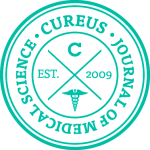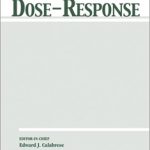Llewelyn R. Twentyman, B.Ch. Cantab
The recovery of man in medicine
Homeopathy, 2011, 100 (1), 73-75

A great deal of interest has been directed during the last few years to the auto-immune phenomena in disease, in which immune reactions of antigen antibody type take place between the organism and one of its own tissues or organs. The research workers have been busy unveiling these immune phenomena, originally discovered in relation to Hashimoto’s disease of the thyroid, in an ever widening range of diseases, notably the so-called collagen diseases, including rheumatoid arthritis, rheumatic fever, scleroderma, dermatomyositis, periarteritis nodosa, lupus erythematosus, and in certain non-specific granulomata, particularly ulcerative colitis and Crohn’s disease, as well as in such conditions as virus hepatitis and cirrhosis of the liver. Certain problems of carcinoma are also being studied from this point of view and there are reports from Japan of successful results following the transplantation of portions of a patient’s turnout into another and healthy part of the same patient. There is a divergence of opinion as to whether these auto-immune reactions are the cause of or merely attendant phenomena to the disease processes. A considerable amount of evidence supports the view (certainly in respect of the collagen diseases) that these phenomena arise subsequent to the disease, and depend on the same causes, perhaps disturbances of enzyme systems, as do the rest of the disease phenomena. That the enzyme disturbances themselves are only an effect and not causative in any ultimate sense is also obvious and so long as we stay within this essentially mechanical realm we will remain outside the realm of real causes.It has also become well established that arthritis clinically very similar to rheumatoid arthritis may manifest in the course of carcinomatous disease, not only in cancer of the lung, but also in cancer of practically any organ. Following the removal or control of the primary tumour, all the joint symptoms may clear up in a few days. It has been suggested that these phenomena also belong to these auto-immune reactions, as well as the arthritides associated with colitis and other conditions.Now all these phenomena have forcibly posed the question as to how the organism distinguishes between self and not-self, and how it comes about that some of the self becomes, in the course of disease processes, not-self. This is, of course, the old question of the wholeness of the organism turning up in a new and most interesting form and we arc learning that in certain diseases an organ, or tissue, or perhaps cell, can emancipate and behave, judged by these immunological reactions, as a foreign body. Obviously all these problems are also involved with the question as to how the foreign stuffs which we eat and digest are transformed from foreign into integral elements within the organism. It is indeed interesting how these refined immunological techniques may display whether the wholeness of the organism is dominant or whether subversive elements leading to autonomy are triumphing. The notion of self as used in these researches signifies the wholeness of the organism. Modern scientific research, directed essentially to discovering mechanisms of ever-increasing refinement and subtlety, is leading one nevertheless to the observation of these distinctions of self and not-self, with which philosophy has wrestled for thousands of years. These researches remain entirely mechanical in conception and great inventiveness is displayed-one may mention the clonal selection theory of Sir Frank Macfarlane Burnett-in producing theories of a mechanical nature to explain these phenomena. The great weakness of all such mechanical approaches is that they never approach anywhere near the world of actual human experience and the body and its processes remain divorced from the essential human being.







